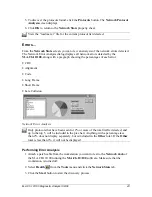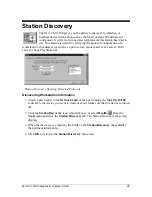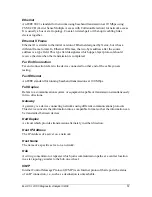
M.A.Ch.10/100 Diagnostic Analyzer 09/00
52
IEEE
The Institute of Electrical and Electronics Engineers (IEEE) sets computer and
communications standards in the U.S. and works in conjunction with the International
Standards Organization (ISO) to set world-wide standards.
IP
Internet Protocol (IP) is a network protocol allowing communications over devices that
are not physically connected to each other. This protocol determines how transmissions
are broken into packets, how those packets are routed and how they are reassembled at
the delivery point of the transmission.
IP Address
IP is short for Internet Protocol. The IP address is 32-bit binary number that provides a
unique number for each workstation or device connected to the Internet.
IPX
Internetwork Packet Exchange or IPX is the protocol in Novell NetWare for addressing
and routing of packets within and between LANs.
Issued DNS
The original DNS (Domain Name System) address assigned to a host
Issued Gateway
The default gateway’s IP Address.
Issued IP
The original IP Address assigned to a certain device on a network which uniquely
identifies it from all other devices.
Issued Subnet Mask
The original Subnet Mask address assigned to a device on a network.
Jabber
When a device transmits either a continuous stream of data or packets exceeding the
maximum allowable size for an Ethernet network, it results in an error.
Link Segment
A point-to-point configuration with two network devices connected by the same cable.
Local Area Network (LAN)
A communications network serving multiple users within a confined geographical area
(as in the same building or group of adjacent buildings). It usually refers to the
interconnection of personal computers. Shared data is stored in a high performance PC
called a fileserver, which serves as a remote disk drive to all network users. Users may
also share printers, modems and other peripheral devices.





































